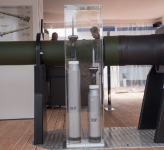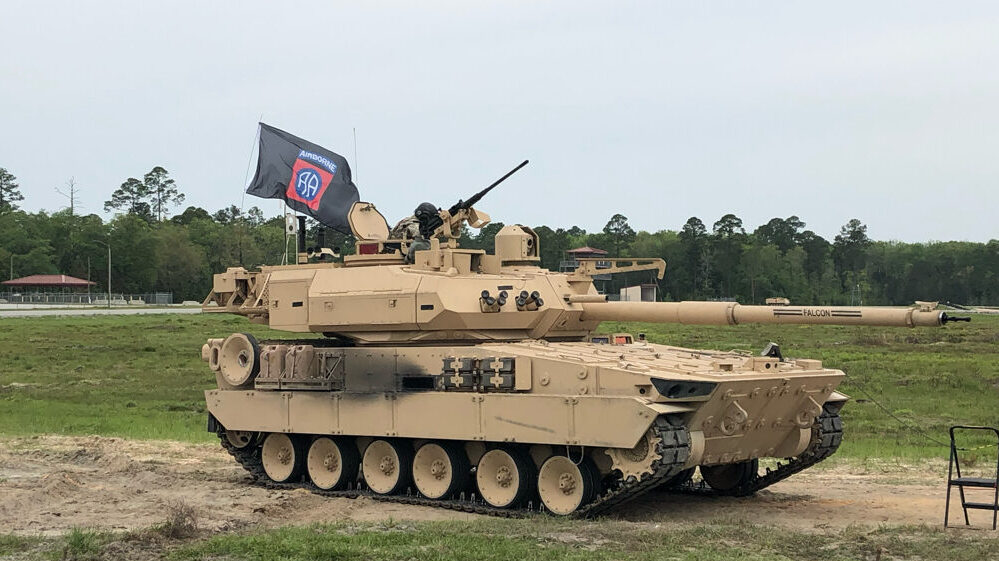On May 26 the Slovak Ministry of Defence issued a document entitled “Feasibility Study for the Procurement of Tracked Combat Armoured Vehicles and Tracked Combat Vehicles” which draws the conclusions of the lengthy testing process that saw the competing vehicles performing in the country. The document, in Slovak language, lacks some of the information that were considered classified, but gives a general overview of the results obtained during field trials. The five main evaluation points were interoperability, mobility, firepower, mine resistance and ballistic resistance. Combat (PBOV in Slovak acronym) and support (POB) vehicles will replace in Slovak service BVP-1 and BVP-2 infantry fighting vehicles, BPsV Svatava combat reconnaissance vehicles, OT-90 armoured personnel carriers, SVO self-propelled mine-clearing vehicle and MU-90 mine-laying vehicle, all currently deployed by mechanised formations.
Four competitors took part in the bid, BAE Systems Hägglunds CV90 (both CV9030 Mk IV and CV9035 MkIV), General Dynamics European Land Systems Santa Bárbara Sistemas ASCOD, Rheinmetall Lynx KF41 and Polish Armaments Group – PGZ Borsuk. The total Phase 1 requirement is for 152 vehicles of which 110 in the combat version, 15 command posts, 9 reconnaissance, 3 antimaterial rifles team, 9 grenade launcher team, 3 recovery and 3 maintenance and repair. As for Phase 2, this should include 5 combat, 10 recovery, 9 maintenance and repair, 9 engineer mine-clearing, 9 engineer mine-laying, 9 engineer support and 20 120 mm self-propelled mortars, for a total of 71 vehicles, the grand total thus being 223.
The programme timing sees the delivery of the first combat vehicles in 2023-24 for first trials, followed in the 2025-28 period by the delivery of the other versions for testing and delivery to the units. This
According to the released document the preferred bidder is BAE Systems Hägglunds CV90, the offer being supported by the Swedish Defence Material Administration (FMV). This recommendation is now passed over to the Slovak Government, which decision is expected in June, which will then lead to final negotiations before the contract signature.
In the following lines a summary of the most interesting parts of the Slovak MoD document.
The evaluation took into consideration four main areas, technical, logistical, financial and the involvement of Slovak industry, the assessment being given in percent over target requirements.
For the technical evaluation mobility, manoeuvrability, firepower, protection and training assets were the main criteria. None of the vehicles fulfilled completely the requirements, the result table of the technical evaluation published in the document shows the following:
| Vehicle | Rating |
| CV90 MkIV | 292 |
| Lynx KF41 | 257 |
| ASCOD | 279 |
| Borsuk | 30 |
First came the CV90, although it didn’t meet two requirements, maximum cannon elevation and vertical obstacle crossing. The fact that the Mk IV is based on the wide experience acquired on previous CV90 versions, its combat experience, and the wide community that forms its Users’ Club were of course considered as a plus.
Comments on the Lynx positively underline the modularity aspect and the considerable internal space, while on the minus side we find overall dimensions and the fact that the vehicle is not in use in the country of origin, although Rheinmetall was presenting its tracked vehicle through Rheinmetall Hungary Zrt, Hungary being the launch customer for the Lynx KF41
Although ranking second in the field, the ASCOD was moved to the third place following the manufacturer information related to noise and vibrations, something that clearly emerged in the testing of the UK Ajax which is based on that chassis.
The Borsok ranking is mainly due to the fact that its development is not completed.
The security and protection of information and communication systems was also considered, the corresponding table showing the following results:
| Vehicle | Rating |
| CV90 MkIV | 83 |
| ASCOD | 83 |
| Lynx KF41 | 80 |
| Borsuk | 0 |
The overall results are shown in the following table:
| Vehicle | Rating |
| CV90 MkIV | 375 |
| ASCOD | 362 |
| Lynx KF41 | 337 |
| Borsuk | 30 |
However due to the aforementioned considerations on the ASCOD vibrations issue, the final ranking is the following:
- Kingdom of Sweden – CV90 (both with 30 mm and 35 mm cannon)
- Republic of Hungary – LYNX
- Kingdom of Spain – ASCOD
- Republic of Poland – BORSUK
The first three vehicles were then short listed and carried on a further testing at VTSÚ Záhorie. The Lynx was fitted with a Lance turret armed with the Rheinmetall Mk30-2 cannon, the ASCOD with Elbit’s MT30 fitted with a Northrop Grumman Bushmaster II Mk44S, and the CV90 with the latest d-Turret also with a Bushmaster II.
In the shooting tests the CV90 came first, ahead of the ASCOD and the Lynx. None of the turrets met the required number of ready to fire ammunition, the Lance turret being also unable to aim the cannon without using the vehicle power supply. All three competitors met driving requirements, while all of them did not fully satisfied ergonomic features.
The financial evaluation was based on a formula where the total cost of ownership was the sum of the vehicle price, a 20 years life cycle estimate, initial training costs, primary logistic costs and spares. The “financial ranking” saw the CV9030 ranking first, ahead of the CV9035, followed by ASCOD and Lynx, the ranking remaining the same after additional information were required by the Slovak MoD.
When logistic issues were considered the ranking changed considerably, the Lynx coming first, ahead of the CV90, the two versions being ranked equally, and of the ASCOD, the Borsuk coming last.
As for the ability to involve the Slovak industry into the programme, the CV9030 came first ahead of the Lynx, the CV9035 and the ASCOD.
In the end the final evaluation of the five original competitors, with the achieved percentages after the evaluation of tenders is the following:
| Vehicle | Achieved percentage |
| CV9030 | 99.67% |
| CV9035 | 98.46% |
| ASCOD | 88.10% |
| Lynx KF41 | 76.66% |
| Borsuk | 3.53% |
Following the request of additional information that modified the financial and logistical sections, a final table is provided showing the following results:
| Vehicle | Achieved percentage |
| CV9030 | 99.67% |
| CV9035 | 97.76% |
| ASCOD | 92.80% |
| Lynx KF41 | 90.20% |
| Borsuk | 3.72% |
A financial evaluation then follows. Drafting a table based on what is written in the Slovak MoD document brings to the following:
| Vehicle | Cost in € incl. VAT |
| CV90 | 1,973,570,581 |
| ASCOD | 1.962.700.133 |
| Lynx KF41 | 2 346 483 109 |
| Borsuk | n.a. |
In one of the final statements the document says: “Summarising all available documents, the Swedish offer with CV9030 and CV9035 from BAE Systems Hägglunds appears to be an offer that to the greatest extent meets the requirements of the Slovak Republic Armed Forces for a tracked armoured combat vehicle. The vehicle meets the technical parameters, including those which were determined as key/priority in terms of use for the needs of the Slovak Republic Armed Forces.”
Estimated costs for Phase 1, including 35 million € for infrastructures are the following:
| Vehicle | Cost in € incl. VAT |
| CV9030 | 1,669,093,939 |
| CV9035 | 1 688 845 030 |
| ASCOD | 1,724,882,231 |
| Lynx KF41 | 1,854,089,739 |








